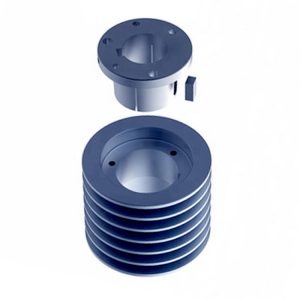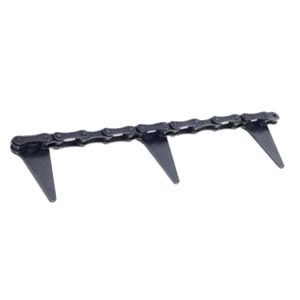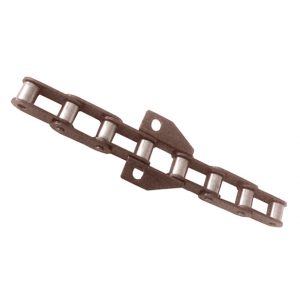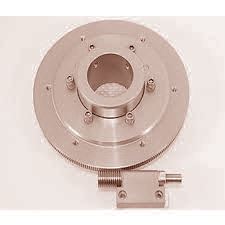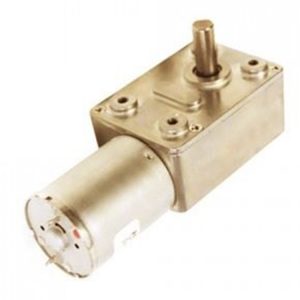Product Description
V Belt Pulley with ISO9001 (SPA, SPB, SPC, SPZ)
1. V-Pulley
Taper Bore
SPZ SPA CHINAMFG SPC
2. V-Pulley
Stock Bore
SPZ SPA CHINAMFG SPC
3. V-Pulley
Adjustable Speed
TB-1 TB-2 SB-1 SB-2
4. V-Pulley
Multi-Wedged
J L M
| 50 – 1 x SPZ – 1008 rü 15 | Taper-v-belt pulley |
| 56 – 1 x SPZ – 1008 rü 15 | Taper-v-belt pulley |
| 60 – 1 x SPZ – 1008 bü | Taper-v-belt pulley |
| 63 – 1 x SPZ – 1108 bü | Taper-v-belt pulley |
| 67 – 1 x SPZ – 1108 bü | Taper-v-belt pulley |
| 71 – 1 x SPZ – 1108 bü | Taper-v-belt pulley |
| 75 – 1 x SPZ – 1108 bü | Taper-v-belt pulley |
| 80 – 1 x SPZ – 1210 bü | Taper-v-belt pulley |
| 85 – 1 x SPZ – 1210 bü | Taper-v-belt pulley |
| 90 – 1 x SPZ – 1210 bü | Taper-v-belt pulley |
| 95 – 1 x SPZ – 1210 bü | Taper-v-belt pulley |
| 100 – 1 x SPZ – 1210 bü | Taper-v-belt pulley |
| 106 – 1 x SPZ – 1610 bü | Taper-v-belt pulley |
| 112 – 1 x SPZ – 1610 bü | Taper-v-belt pulley |
| 118 – 1 x SPZ – 1610 bü | Taper-v-belt pulley |
| 125 – 1 x SPZ – 1610 bü | Taper-v-belt pulley |
| 132 – 1 x SPZ – 1610 bü | Taper-v-belt pulley |
| 140 – 1 x SPZ – 1610 bü | Taper-v-belt pulley |
| 150 – 1 x SPZ – 1610 bü | Taper-v-belt pulley |
| 160 – 1 x SPZ – 1610 bü | Taper-v-belt pulley |
| 170 – 1 x SPZ – 1610 bü | Taper-v-belt pulley |
| 180 – 1 x SPZ – 1610 bü | Taper-v-belt pulley |
| 190 – 1 x SPZ – 2012 bü | Taper-v-belt pulley |
| 200 – 1 x SPZ – 2012 bü | Taper-v-belt pulley |
| 224 – 1 x SPZ – 2012 bü | Taper-v-belt pulley |
| 250 – 1 x SPZ – 2012 bü | Taper-v-belt pulley |
| 280 – 1 x SPZ – 2012 bü | Taper-v-belt pulley |
| 315 – 1 x SPZ – 2012 bü | Taper-v-belt pulley |
| 355 – 1 x SPZ – 2012 bü | Taper-v-belt pulley |
| 400 – 1 x SPZ – 2012 bü | Taper-v-belt pulley |
| 500 – 1 x SPZ – 2517 | Taper-v-belt pulley |
| 50 – 2 x SPZ – 1008 rü 26 | Taper-v-belt pulley |
| 56 – 2 x SPZ – 1108 rü 26 | Taper-v-belt pulley |
| 60 – 2 x SPZ – 1108 rü 26 | Taper-v-belt pulley |
| 63 – 2 x SPZ – 1108 bü | Taper-v-belt pulley |
| 67 – 2 x SPZ – 1108 bü | Taper-v-belt pulley |
| 71 – 2 x SPZ – 1108 | Taper-v-belt pulley |
| 75 – 2 x SPZ – 1210 bü | Taper-v-belt pulley |
| 80 – 2 x SPZ – 1210 bü | Taper-v-belt pulley |
| 85 – 2 x SPZ – 1610 bü | Taper-v-belt pulley |
| 90 – 2 x SPZ – 1610 bü | Taper-v-belt pulley |
| 95 – 2 x SPZ – 1610 bü | Taper-v-belt pulley |
| 100 – 2 x SPZ – 1610 bü | Taper-v-belt pulley |
| 106 – 2 x SPZ – 1610 bü | Taper-v-belt pulley |
| 112 – 2 x SPZ – 1610 bü | Taper-v-belt pulley |
| 118 – 2 x SPZ – 1610 bü | Taper-v-belt pulley |
| 125 – 2 x SPZ – 1610 bü | Taper-v-belt pulley |
| 132 – 2 x SPZ – 1610 bü | Taper-v-belt pulley |
| 140 – 2 x SPZ – 1610 bü | Taper-v-belt pulley |
| 150 – 2 x SPZ – 2012 bü | Taper-v-belt pulley |
| 160 – 2 x SPZ – 2012 bü | Taper-v-belt pulley |
| 170 – 2 x SPZ – 2012 bü | Taper-v-belt pulley |
| 180 – 2 x SPZ – 2012 bü | Taper-v-belt pulley |
| 190 – 2 x SPZ – 2012 bü | Taper-v-belt pulley |
| 200 – 2 x SPZ – 2012 bü | Taper-v-belt pulley |
| 224 – 2 x SPZ – 2012 bü | Taper-v-belt pulley |
| 250 – 2 x SPZ – 2012 bü | Taper-v-belt pulley |
| 280 – 2 x SPZ – 2012 bü | Taper-v-belt pulley |
| 315 – 2 x SPZ – 2012 bü | Taper-v-belt pulley |
| 355 – 2 x SPZ – 2012 bü | Taper-v-belt pulley |
| 400 – 2 x SPZ – 2517 bü | Taper-v-belt pulley |
| 450 – 2 x SPZ – 2517 bü | Taper-v-belt pulley |
| 500 – 2 x SPZ – 2517 bü | Taper-v-belt pulley |
| 63 – 3 x SPZ – 1108 rü 17 | Taper-v-belt pulley |
| 67 – 3 x SPZ – 1108 rü 17 | Taper-v-belt pulley |
| 71 – 3 x SPZ – 1108 rü 17 | Taper-v-belt pulley |
| 75 – 3 x SPZ – 1210 rü 14 | Taper-v-belt pulley |
| 80 – 3 x SPZ – 1210 rü 14 | Taper-v-belt pulley |
| 85 – 3 x SPZ – 1610 rü 14 | Taper-v-belt pulley |
| 90 – 3 x SPZ – 1610 rü 14 | Taper-v-belt pulley |
| 95 – 3 x SPZ – 1610 rü 14 | Taper-v-belt pulley |
| 100 – 3 x SPZ – 1610 rü 14 | Taper-v-belt pulley |
| 106 – 3 x SPZ – 1610 rü 14 | Taper-v-belt pulley |
| 112 – 3 x SPZ – 2012 bü | Taper-v-belt pulley |
| 118 – 3 x SPZ – 2012 bü | Taper-v-belt pulley |
| 125 – 3 x SPZ – 2012 bü | Taper-v-belt pulley |
| 132 – 3 x SPZ – 2012 bü | Taper-v-belt pulley |
| 140 – 3 x SPZ – 2012 bü | Taper-v-belt pulley |
| 150 – 3 x SPZ – 2012 bü | Taper-v-belt pulley |
| 160 – 3 x SPZ – 2012 bü | Taper-v-belt pulley |
| 170 – 3 x SPZ – 2012 bü | Taper-v-belt pulley |
| 180 – 3 x SPZ – 2012 bü | Taper-v-belt pulley |
| 190 – 3 x SPZ – 2012 bü | Taper-v-belt pulley |
| 200 – 3 x SPZ – 2012 bü | Taper-v-belt pulley |
| 224 – 3 x SPZ – 2012 bü | Taper-v-belt pulley |
| 250 – 3 x SPZ – 2012 bü | Taper-v-belt pulley |
| 280 – 3 x SPZ – 2517 bü | Taper-v-belt pulley |
| 315 – 3 x SPZ – 2517 bü | Taper-v-belt pulley |
| 355 – 3 x SPZ – 2517 bü | Taper-v-belt pulley |
| 400 – 3 x SPZ – 2517 bü | Taper-v-belt pulley |
| 450 – 3 x SPZ – 2517 bü | Taper-v-belt pulley |
| 500 – 3 x SPZ – 2517 bü | Taper-v-belt pulley |
| 630 – 3 x SPZ – 2517 bü | Taper-v-belt pulley |
| 63 – 4 x SPZ – 1108 | Taper-v-belt pulley |
| 67 – 4 x SPZ – 1108 | Taper-v-belt pulley |
| 71 – 4 x SPZ – 1108 | Taper-v-belt pulley |
| 75 – 4 x SPZ – 1210 rü 26 | Taper-v-belt pulley |
| 80 – 4 x SPZ – 1210 rü 26 | Taper-v-belt pulley |
| 85 – 4 x SPZ – 1610 rü 26 | Taper-v-belt pulley |
| 90 – 4 x SPZ – 1610 rü 26 | Taper-v-belt pulley |
| 95 – 4 x SPZ – 1610 rü 26 | Taper-v-belt pulley |
| 100 – 4 x SPZ – 2012 rü 20 | Taper-v-belt pulley |
| 106 – 4 x SPZ – 2012 rü 20 | Taper-v-belt pulley |
| 112 – 4 x SPZ – 2012 bü | Taper-v-belt pulley |
| 118 – 4 x SPZ – 2012 bü | Taper-v-belt pulley |
| 125 – 4 x SPZ – 2012 bü | Taper-v-belt pulley |
| 132 – 4 x SPZ – 2012 bü | Taper-v-belt pulley |
| 140 – 4 x SPZ – 2012 bü | Taper-v-belt pulley |
| 150 – 4 x SPZ – 2517 bü | Taper-v-belt pulley |
| 160 – 4 x SPZ – 2517 bü | Taper-v-belt pulley |
| 170 – 4 x SPZ – 2517 bü | Taper-v-belt pulley |
| 180 – 4 x SPZ – 2517 bü | Taper-v-belt pulley |
| 190 – 4 x SPZ – 2517 | Taper-v-belt pulley |
| 200 – 4 x SPZ – 2517 bü | Taper-v-belt pulley |
| 224 – 4 x SPZ – 2517 bü | Taper-v-belt pulley |
| 250 – 4 x SPZ – 2517 bü | Taper-v-belt pulley |
| 280 – 4 x SPZ – 2517 bü | Taper-v-belt pulley |
| 315 – 4 x SPZ – 2517 bü | Taper-v-belt pulley |
| 355 – 4 x SPZ – 2517 bü | Taper-v-belt pulley |
| 400 – 4 x SPZ – 2517 bü | Taper-v-belt pulley |
| 450 – 4 x SPZ – 3571 bü | Taper-v-belt pulley |
| 500 – 4 x SPZ – 3571 bü | Taper-v-belt pulley |
| 630 – 4 x SPZ – 3030 bü | Taper-v-belt pulley |
| 800 – 4 x SPZ – 3030 e.b. | Taper-v-belt pulley |
| 85 – 5 x SPZ – 1610 rü 38 | Taper-v-belt pulley |
| 90 – 5 x SPZ – 1610 rü 38 | Taper-v-belt pulley |
| 95 – 5 x SPZ – 1610 rü 38 | Taper-v-belt pulley |
| 100 – 5 x SPZ – 2012 rü 32 | Taper-v-belt pulley |
| 106 – 5 x SPZ – 2012 rü 32 | Taper-v-belt pulley |
| 112 – 5 x SPZ – 2012 bü | Taper-v-belt pulley |
| 118 – 5 x SPZ – 2012 bü | Taper-v-belt pulley |
| 125 – 5 x SPZ – 2012 bü | Taper-v-belt pulley |
| 132 – 5 x SPZ – 2517 bü | Taper-v-belt pulley |
| 140 – 5 x SPZ – 2517 bü | Taper-v-belt pulley |
| 150 – 5 x SPZ – 2517 bü | Taper-v-belt pulley |
| 160 – 5 x SPZ – 2517 bü | Taper-v-belt pulley |
| 180 – 5 x SPZ – 2517 bü | Taper-v-belt pulley |
| 200 – 5 x SPZ – 2517 bü | Taper-v-belt pulley |
| 224 – 5 x SPZ – 2517 bü | Taper-v-belt pulley |
| 250 – 5 x SPZ – 2517 bü | Taper-v-belt pulley |
| 280 – 5 x SPZ – 2517 bü | Taper-v-belt pulley |
| 315 – 5 x SPZ – 2517 bü | Taper-v-belt pulley |
| 355 – 5 x SPZ – 2517 bü | Taper-v-belt pulley |
| 400 – 5 x SPZ – 3571 bü | Taper-v-belt pulley |
| 450 – 5 x SPZ – 3571 bü | Taper-v-belt pulley |
| 500 – 5 x SPZ – 3030 bü | Taper-v-belt pulley |
| 630 – 5 x SPZ – 3030 bü | Taper-v-belt pulley |
| 100 – 6 x SPZ – 2012 rü 44 | Taper-v-belt pulley |
| 106 – 6 x SPZ – 2012 rü 44 | Taper-v-belt pulley |
| 112 – 6 x SPZ – 2012 rü 44 | Taper-v-belt pulley |
| 118 – 6 x SPZ – 2517 rü 31 | Taper-v-belt pulley |
Choose GOODLUCK(TAI)
1. Our company boasts a combination of research and development, production and sales with highly professional capabilities.
2. Our company produces the pulley with the following: Drive can mitigate impact load; Transmission smooth operation, low noise, low vibration; Transmission of simple structure, easy to adjust; Drive for the manufacture and installation precision of pulley, unlike meshing transmission strictly; It has the function of overload protection; Transmission center distance of 2 axis adjusting range is larger.
/* January 22, 2571 19:08:37 */!function(){function s(e,r){var a,o={};try{e&&e.split(“,”).forEach(function(e,t){e&&(a=e.match(/(.*?):(.*)$/))&&1
| Certification: | ISO |
|---|---|
| Pulley Sizes: | All |
| Manufacturing Process: | Casting |
| Samples: |
US$ 0/Piece
1 Piece(Min.Order) | Order Sample |
|---|
| Customization: |
Available
| Customized Request |
|---|
.shipping-cost-tm .tm-status-off{background: none;padding:0;color: #1470cc}
|
Shipping Cost:
Estimated freight per unit. |
about shipping cost and estimated delivery time. |
|---|
| Payment Method: |
|
|---|---|
|
Initial Payment Full Payment |
| Currency: | US$ |
|---|
| Return&refunds: | You can apply for a refund up to 30 days after receipt of the products. |
|---|
What is the difference between a fixed and a swivel pulley?
Fixed and swivel pulleys are two common types of pulleys that differ in their design and functionality. Here are the key differences between these two types:
1. Fixed Pulley: A fixed pulley is a type of pulley that is mounted or attached to a fixed point, such as a beam or a ceiling. It does not move or rotate independently of its mounting point. The primary function of a fixed pulley is to change the direction of the force applied to a rope or cable. When a force is applied to the rope or cable passing through a fixed pulley, the load moves in the opposite direction. However, a fixed pulley does not provide any mechanical advantage, meaning it does not reduce the effort required to lift the load.
2. Swivel Pulley: A swivel pulley, also known as a movable pulley, is designed to rotate or swivel on a separate mounting point. It has a built-in mechanism that allows it to move independently. Unlike a fixed pulley, a swivel pulley is capable of changing both the direction and the magnitude of the force applied to the rope or cable. When a force is applied to the rope or cable passing through a swivel pulley, the load moves in the same direction as the applied force. Additionally, a swivel pulley provides a mechanical advantage by distributing the load’s weight over multiple strands of rope or cable, reducing the effort required to lift the load.
In summary, the main differences between fixed and swivel pulleys are:
– Fixed pulleys are stationary and do not move independently, while swivel pulleys can rotate or swivel on a separate mounting point.
– Fixed pulleys change the direction of the force applied to the rope or cable, while swivel pulleys change both the direction and the magnitude of the force.
– Fixed pulleys do not provide a mechanical advantage, while swivel pulleys provide a mechanical advantage by distributing the load’s weight over multiple strands of rope or cable.
Both fixed and swivel pulleys have their specific applications and can be used individually or in combination with each other to achieve desired mechanical functions in various systems and setups.
How do pulleys contribute to the functioning of bicycles and motorcycles?
Pulleys play important roles in the functioning of both bicycles and motorcycles, aiding in power transmission, speed control, and overall mechanical efficiency. Here’s how pulleys contribute to the operation of these vehicles:
1. Bicycles:
– Derailleur System: In most modern bicycles, pulleys are used in the derailleur system. The derailleur is responsible for shifting the bicycle chain between different gears on the front and rear sprockets. Pulleys, often referred to as jockey wheels, are positioned in the derailleur to guide and tension the chain as it moves between gears. They ensure smooth and precise shifting, allowing the rider to adapt to various terrains and maintain an optimal pedaling cadence.
– Belt Drive Systems: Some bicycles use a belt drive instead of a traditional chain drive. Belt drives employ a pulley system that consists of a front pulley attached to the pedal crank and a rear pulley attached to the rear wheel hub. The belt is wrapped around these pulleys, transferring power from the rider’s pedaling motion to propel the bicycle forward. Pulleys in belt drive systems enable efficient power transfer, reduce maintenance needs, and provide a quieter and cleaner alternative to chain drives.
2. Motorcycles:
– Clutch System: Pulleys, known as clutch pulleys, are utilized in motorcycle clutch systems. The clutch connects the engine to the transmission and allows the rider to engage or disengage power transmission to the rear wheel. When the clutch lever is pulled, the clutch pulley separates the engine’s rotational motion from the transmission, disengaging power transfer. Releasing the clutch lever brings the pulley back into contact, engaging power transmission and enabling the motorcycle to move.
– Variable Transmission Systems: Some motorcycles employ pulleys in variable transmission systems, such as continuously variable transmissions (CVT). CVTs use a pair of pulleys connected by a belt or chain. By changing the diameter of the pulleys, the CVT adjusts the gear ratio continuously, providing seamless and efficient power delivery across a wide range of speeds. Pulleys in variable transmission systems contribute to smooth acceleration, improved fuel efficiency, and enhanced riding comfort.
– Drive Belt Systems: Pulleys are also utilized in motorcycles equipped with belt drive systems. Similar to bicycles, these systems consist of a front pulley connected to the engine’s crankshaft and a rear pulley connected to the rear wheel. The belt runs around these pulleys, transferring power from the engine to the rear wheel. Belt drive systems offer advantages such as reduced maintenance, quieter operation, and smoother power delivery compared to traditional chain drives.
Overall, pulleys are integral components in bicycles and motorcycles, contributing to smooth gear shifting, efficient power transmission, and improved overall performance. Whether in derailleur systems, belt drive systems, clutch systems, or variable transmission systems, pulleys play a vital role in enhancing the functionality and ride experience of these vehicles.
What materials are typically used to manufacture pulleys?
Pulleys are manufactured using a variety of materials, depending on the specific application and requirements. Here are some of the materials that are typically used to manufacture pulleys:
1. Metal Alloys: Metal alloys such as steel and cast iron are commonly used to manufacture pulleys. Steel pulleys offer excellent strength, durability, and resistance to wear and corrosion. Cast iron pulleys are known for their high strength and resistance to impact and shock loads. Metal alloys are preferred in heavy-duty applications where strength and durability are critical.
2. Aluminum: Aluminum is widely used in pulley manufacturing due to its lightweight nature and corrosion resistance. Aluminum pulleys are commonly used in applications that require reduced weight, such as automotive engines, aircraft components, and light-duty machinery. They offer good strength-to-weight ratio and are suitable for applications where weight reduction is a priority.
3. Plastic: Various types of plastics, including nylon, polyurethane, and high-density polyethylene (HDPE), are used to manufacture pulleys. Plastic pulleys are lightweight, corrosion-resistant, and offer good resistance to wear and abrasion. They are commonly used in applications where noise reduction, chemical resistance, or non-conductive properties are required. Plastic pulleys are frequently used in conveyor systems, packaging machinery, and small-scale equipment.
4. Composite Materials: Composite materials, such as fiberglass-reinforced plastic (FRP) and carbon fiber-reinforced polymer (CFRP), are utilized in the manufacturing of pulleys. These materials offer high strength-to-weight ratios, excellent resistance to corrosion, and good fatigue resistance. Composite pulleys are commonly used in industries such as aerospace, marine, and sports equipment, where lightweight components with exceptional strength are required.
5. Ceramics: In certain specialized applications, pulleys made of ceramics like aluminum oxide (alumina) or silicon nitride are used. Ceramic pulleys offer exceptional hardness, high temperature resistance, and excellent wear resistance. They are primarily used in industries such as semiconductor manufacturing, where extreme precision, chemical resistance, and resistance to high temperatures are crucial.
It’s important to note that the choice of material for pulley manufacturing depends on factors such as load capacity, operating conditions, environmental factors, and cost considerations. Manufacturers select materials that provide the necessary properties to meet the specific requirements of the application while considering factors such as strength, durability, weight, and cost.
editor by CX
























